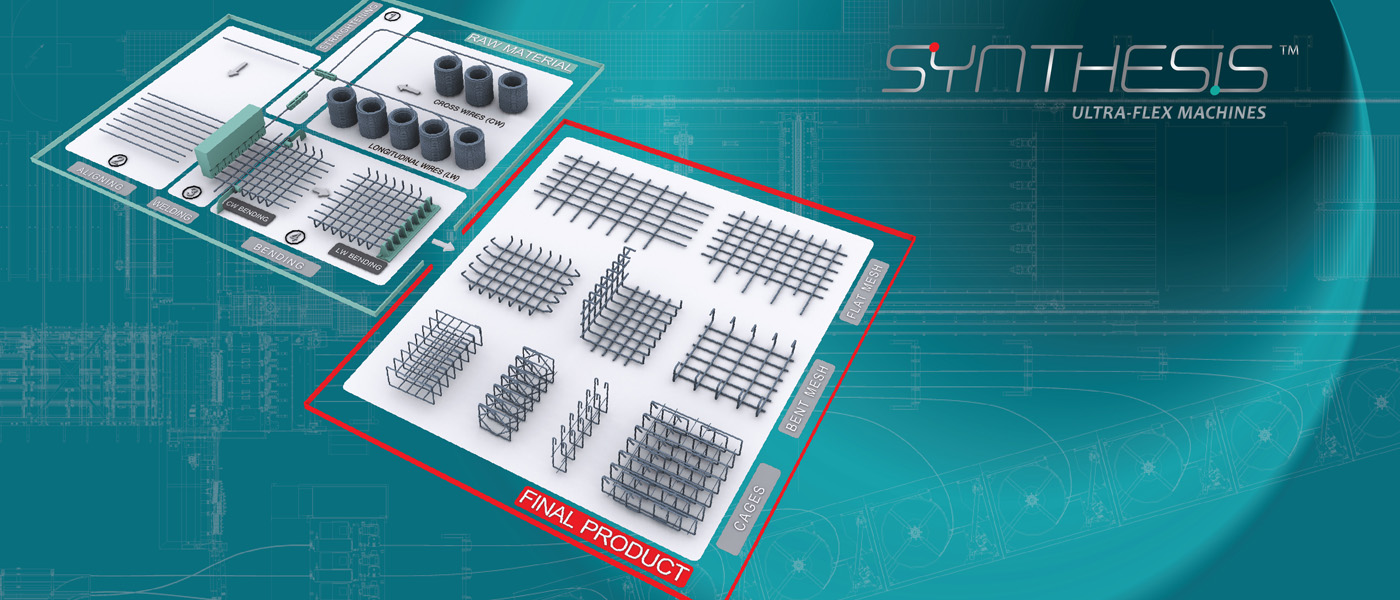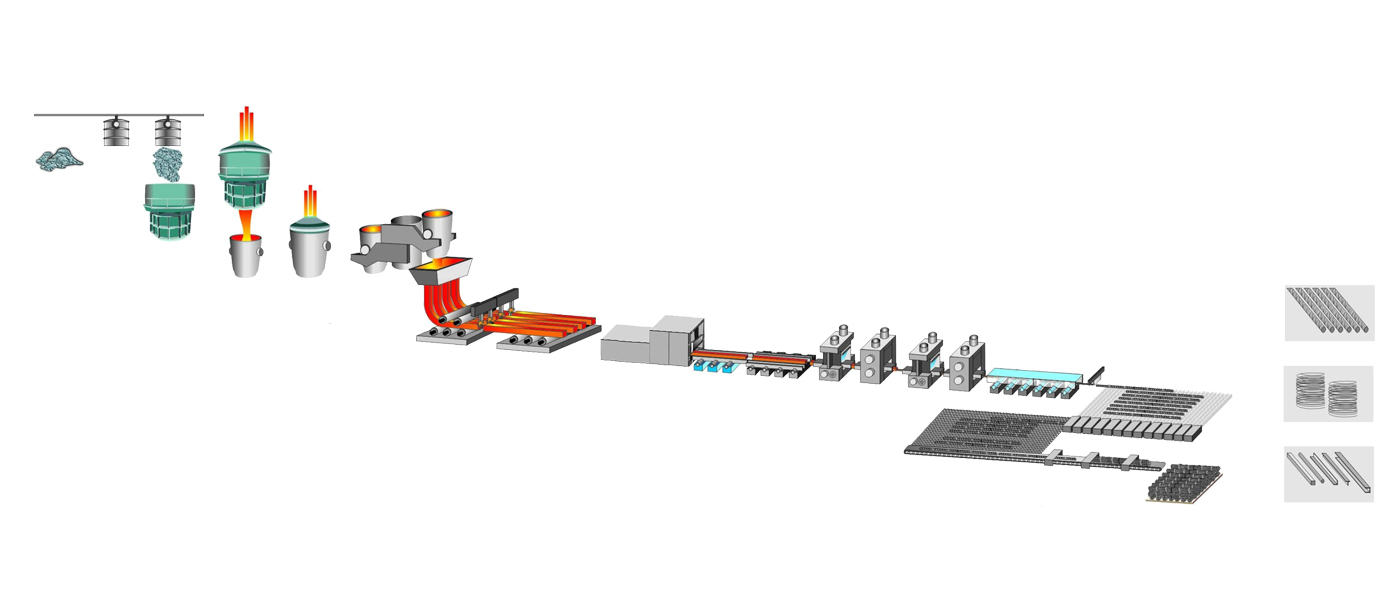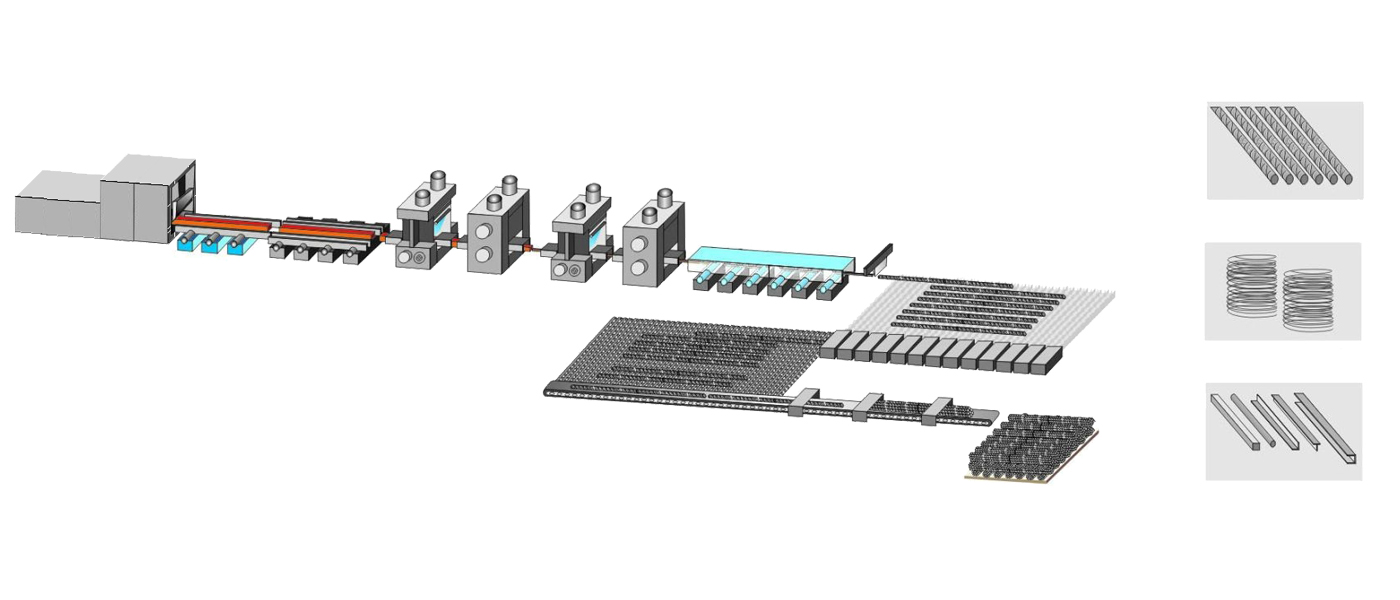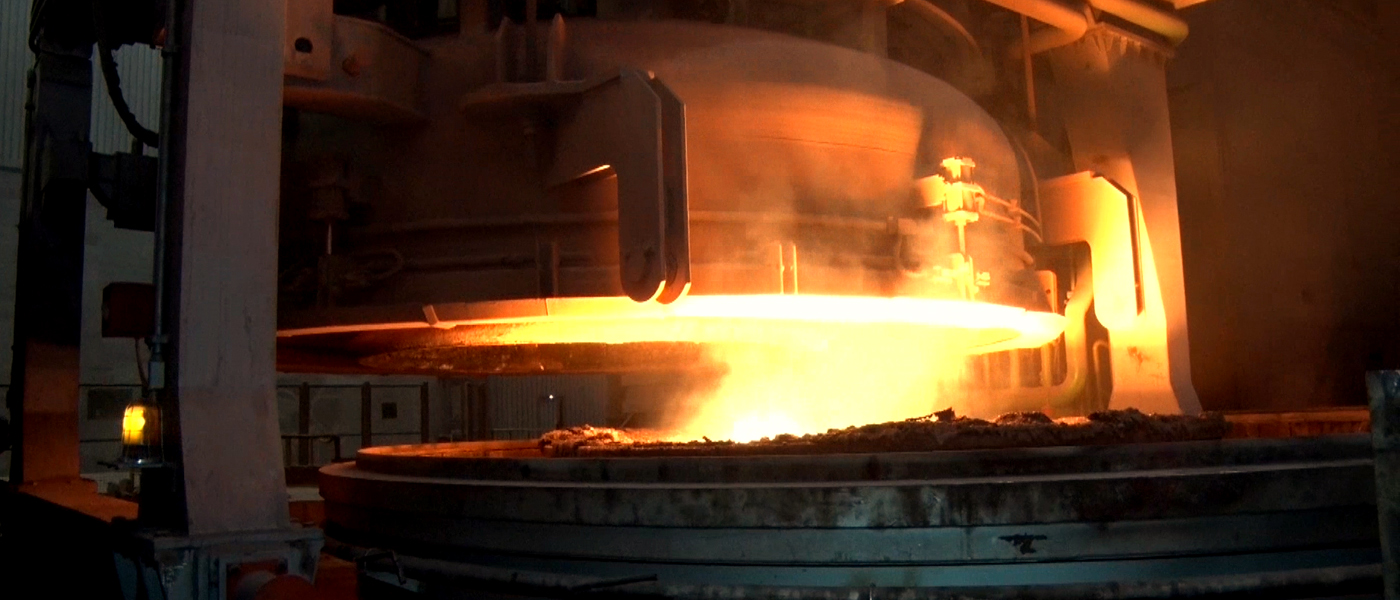
For a number of decades now, Sidenor Group has remained committed to developing innovative technologies and products for the building construction market, through ongoing research and considerable investments. The culmination of experience accumulated through the years is Synthesis™, a new, internationally patented, technology for the industrial prefabrication of reinforcing steel. Synthesis™ was developed in-house by Group subsidiaries and it is a unique in its kind integrated system to automate the manufacture of finished steel products. The Company was granted the patent by the European Patent Office.
Following outstanding success in the Greek building construction market, Sidenor Group decided to proceed to the sale and/or code-sharing arrangements for the technology internationally. In this context, SmartReo (www.smartreo.com.au), a joint venture between Sidenor Holdings and Thiess, the country’s largest building contractor, was set up in Australia. Since November 2014, the new company has been providing integrated solutions in the prefabrication of reinforcing steel using the Synthesis™ technology, in a state-of-the-art manufacturing plant in Brisbane, Queensland, Australia.
 Sovel and Sidenor plants have recently applied new hot charging process by installing induction furnaces in both plants, in order to follow an environmental friendly production.
Sovel and Sidenor plants have recently applied new hot charging process by installing induction furnaces in both plants, in order to follow an environmental friendly production.
Operationally, billets that are produced from the casting machinery are deposited on the hot charging bench and then, one by one, the billet is transferred to the Induction Furnace roller table.
The whole production line is based on state-of-the-art production methods and with the installation of induction furnace long products are manufactured without the use of a reheating furnace, thanks to the uninterrupted casting/rolling method.
The core advantage of the induction furnace operation is a more energy-efficient process and by that an environmental friendly plant, since the temperature of the steel is maintained at exactly the demanded temperature to melt.
 The mechanical properties of SD Class C Steel are achieved with the use of the suitable chemical composition and special heat treatment (see Figure) during production. The chemical composition is characterised by the increased content of the elements that give steel its “natural hardness”.
The mechanical properties of SD Class C Steel are achieved with the use of the suitable chemical composition and special heat treatment (see Figure) during production. The chemical composition is characterised by the increased content of the elements that give steel its “natural hardness”.
With the special heat treatment, the surface of the steel is submitted to hardening, which gives steel high strength, while its interior part is cooled less intensely, giving it high ductility.
DUCTILITY
Constantly increasing requirements for earthquake-resistant constructions require the use of high ductility steels. This led the Greek Earthquake Planning and Protection Organisation (OASP) to propose for the first time steels which are characterised not only by their strength but also by their high ductility, in ductility classes Α and C (where C is the most ductile steel). Class C has adopted by the committee charged with drawing up the new national standard, and is specified in ELOT’s new 1421 – B500C standard.
The ductility of steel (its ability to absorb energy) is the most critical condition affecting the ability of a reinforced concrete construction to develop plasticity. On the stress-strain diagram (σ-ε) obtained from the tensile test, the plastic energy absorbed by steel is represented by the area covered by the shaded part of the diagram.
Increasing ductility means maximising this area, which is achieved through high values for Strain (elongation) (εu) and Tensile Strength/Yield Strength ratio (ft/fy).
In current standards, ductility is defined by a series of parameters such as:
- Elongation at Maximum Load (Agt)
- The ratio between the Ultimate Tensile Strength of the steel and its Yield Strength (ft/fy)
- The ratio between the actual and the nominal Yield Strengths (fy act/fy nom).
In its quest for high quality and innovation, SIDENOR has started production of high ductility SD Class C Steel (ELOT 1421 – B500C).

As part of Sidenor Group’s ongoing investment plan to achieve enhanced quality and product innovations, the installation of the new Vacuum Degasser – VD was successfully completed at the Stomana Industry plant in Bulgaria.
The degasser was put into operation in the end of 2014 and brought about spectacular improvement in the quality of steel produced at Stomana Industry. The degassing of molten steel significantly lowers its hydrogen and nitrogen content. The use of the Vacuum Degasser yields high quality “pure steel”, which in turn leads to high value-added finished products with technical characteristics and properties that can respond to the needs of the most demanding applications.
Vacuum degassing is performed only by top steel manufacturers in Europe and around the world. Equipped with the system, Stomana Industry will be able to produce new qualities of alloy steels and target higher standard sectors, such as the automotive industry, the forging industry and others.



